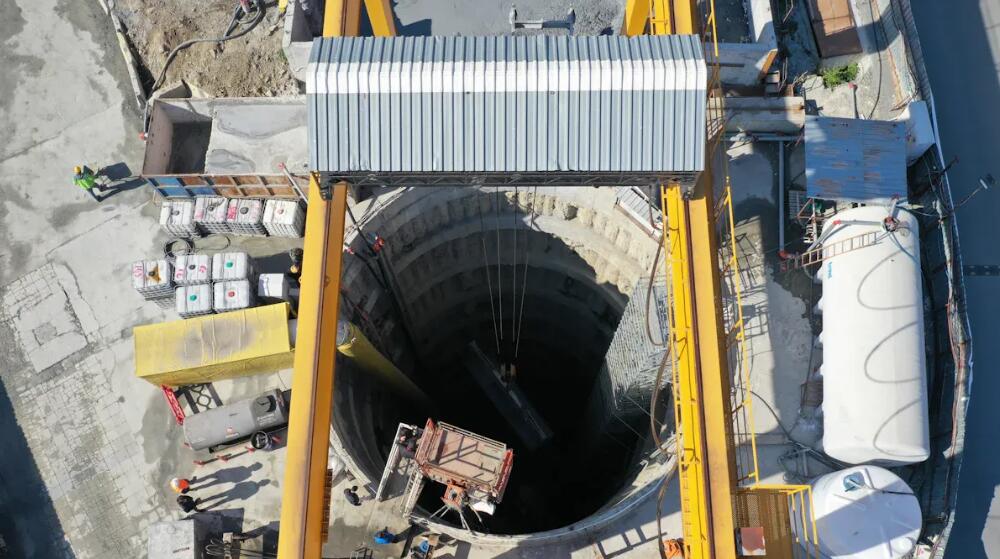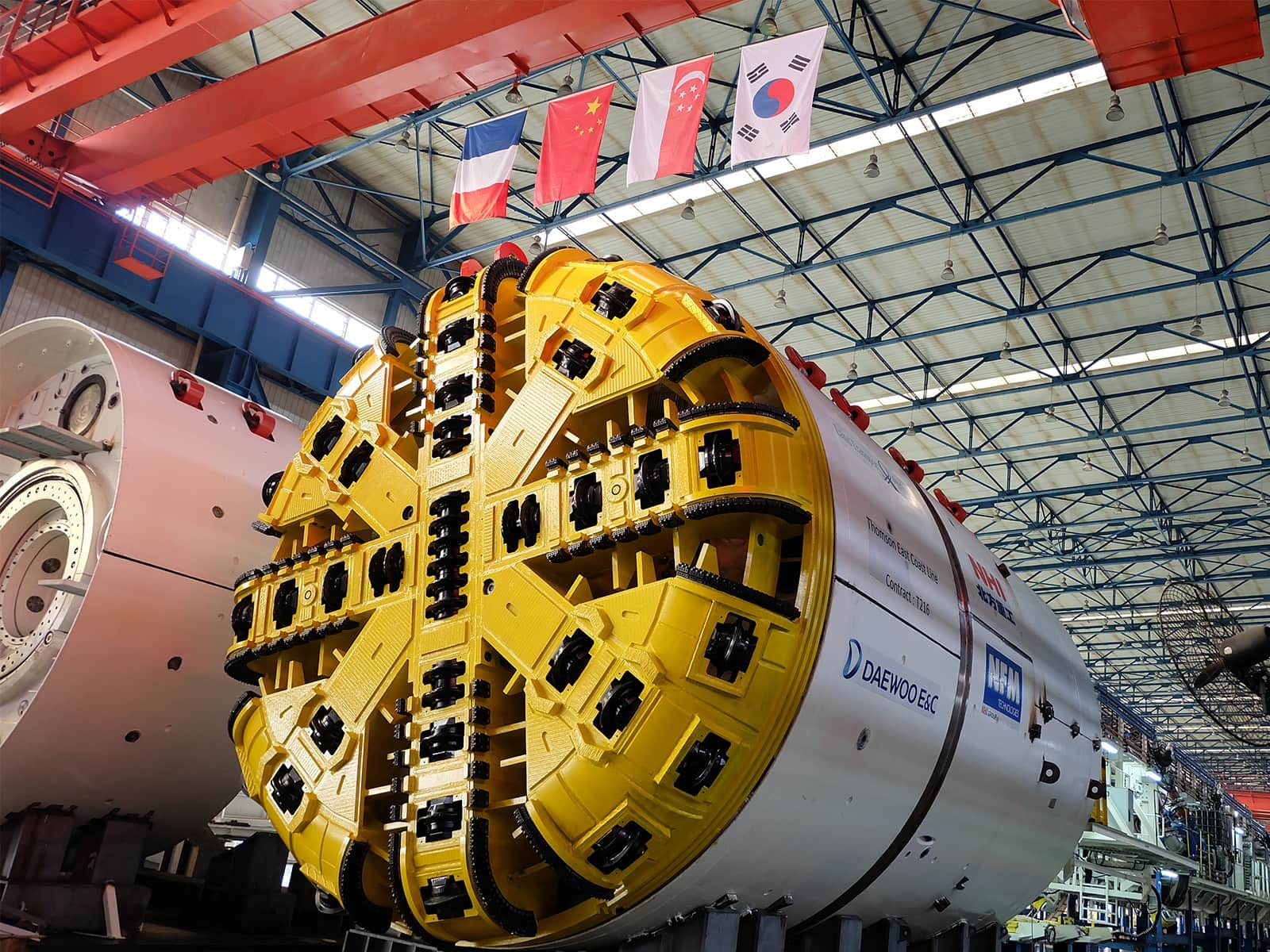
In 2025, the tunnel boring machine price is expected to range from $10 million to $100 million. This significant variation is due to the different sizes of tunnel boring machines available. Additionally, the type of ground you are excavating can influence the overall price. The depth of the tunnel also plays a crucial role in determining costs, as does the size of the hole being created.

When you check the tunnel boring machine price in 2025, you will notice a big difference in cost. Most machines cost from $5 million up to $100 million. A standard TBM usually costs about $20 million. Smaller machines can be cheaper. Bigger and more advanced models can cost over $100 million.
The diameter of a tunnel boring machine changes its price a lot. For example, a TBM with an 8-meter diameter costs about $8 million. If you need a bigger TBM, like one with a 16-meter diameter, the price can go up to $76 million or even more. Machines made for subway tunnels are often less expensive because companies make more of them.
Here is a table that shows how the tunnel boring machine price in 2025 compares to other years:
Prices will likely keep going up as more people want TBMs. The TBM market should grow from $7.46 billion in 2024 to $8.12 billion in 2025.
Many things change the tunnel boring machine price. You should think about these main points:
Diameter and Type
Manufacturer
Market Trends
Tip: When you look at the tunnel boring machine price, remember to check the total cost. This means the price to buy, the cost to fix and keep it working, how well it works, and how much time it might not work.
Here is a quick list of important price factors:
If you want to spend less, pick a smaller diameter or a simpler TBM type. You can also look at offers from different makers. Brands like NHI may give you good machines and support, but always check what works best for your project.
The diameter and type of tunnel boring machine change the price a lot. Small-diameter TBMs cost less for each meter. Large-diameter TBMs cost more for every meter, especially if the design is complex. Here is a table that shows the difference:
| TBM Diameter Category | Estimated Price per Meter | Price Characteristics |
|---|---|---|
| Small-Diameter TBMs | Less than US$ 1 million | Lower price increase per meter |
| Large-Diameter TBMs | More than US$ 1 million | Higher price increase per meter, especially for complex designs |
The type of TBM also affects the price. Hard rock TBMs are used for big projects. These machines cost more money. Soft rock TBMs, like EPB and slurry types, are common in cities. They help keep the ground above safe, so their special design makes them cost more.
The company you pick changes the tunnel boring machine price. NHI is a famous brand in the TBM market. Many people trust NHI because it makes good products. If you choose a well-known manufacturer like NHI, you might pay more. You get better help and new features. Some companies sell machines with new technology. This can make the price go up, but it helps with safety and how well the machine works.
Market trends change TBM prices in many ways. More people living in cities means more tunnels are needed. This makes prices go up. Governments spend more money on tunnels and subways. This also raises demand. New technology, like AI-driven maintenance and digital twin systems, helps machines work better and saves money. Here is a table showing how technology changes prices:
| Advancement Type | Impact on Pricing |
|---|---|
| AI-driven predictive maintenance systems | Enhances uptime and reduces operational costs |
| Real-time digital twin technology | Improves efficiency with remote monitoring and control |
| Low-vibration and low-noise machines | Minimizes environmental impact and regulatory costs |
You should think about labor costs and how much it costs to run the machine. Strict rules about the environment, especially in Europe and Japan, make the total price higher. These rules help keep people safe and protect nature, but they make projects harder to approve and cost more.
Note: The European Union’s Green Deal and other rules make companies build better machines and follow tough standards. This means TBM makers pay more to follow the rules.
Using a tunnel boring machine costs a lot in 2025. You might spend $10 million to $50 million at first. You pay for setup, technical help, and special crews. These costs add up fast. Many projects get delayed from maintenance or custom changes. More than 60% of TBMs have these problems. This can make your costs go up. You can save money by leasing or buying certified pre-owned machines. These choices help you stick to your budget. They are good for smaller companies.
You need to do regular maintenance on your TBM. Skilled workers must check the machine often. If you skip maintenance, your TBM might break down. This can cause long delays. Training your crew is very important. You also pay for spare parts and repairs. Maintenance costs can be high, but they keep your TBM working well. Some makers, like NHI, offer support packages. These can help you handle these costs. Compare these options before picking your TBM.
You need to build support infrastructure for your TBM project. In 2025, many companies use automation and AI. These tools help you work faster and follow safety rules. You must also follow environmental laws. This can make your costs higher. Here is a table that shows how infrastructure costs affect budgets:
| Project Name | Funding Source | Total Cost Estimate |
|---|---|---|
| Music City Loop | 100% privately funded | A few hundred million dollars |
Tip: You can save money by picking smart financing. Leasing or buying pre-owned machines helps you control costs. You can also get better technology this way.
Think about the tunnel type, the ground, and how big the tunnel is when you guess TBM costs. Always save some extra money for things you did not expect. The table below can help you plan:
| Factor | Impact on Cost |
|---|---|
| Tunnel Type | Changes the cost |
| Geological Conditions | Can raise cost by 20% |
| Unexpected Costs | Can raise cost by 30% |
Talk to experts and companies like NHI to get the best advice for your project. If you plan well, you can stop big delays that cost a lot.